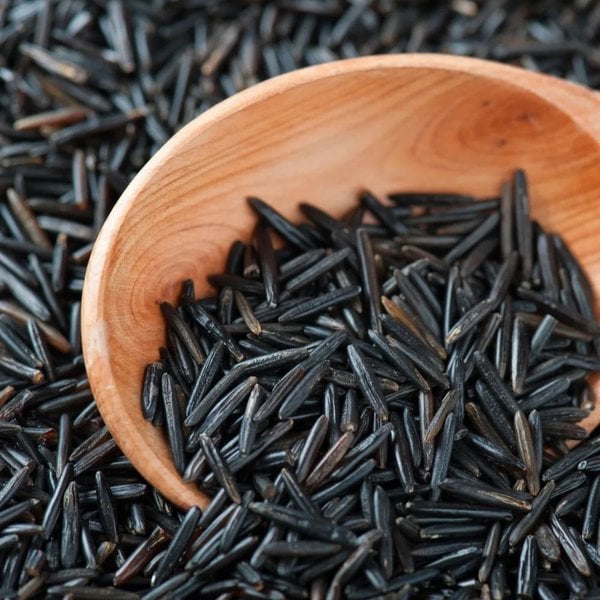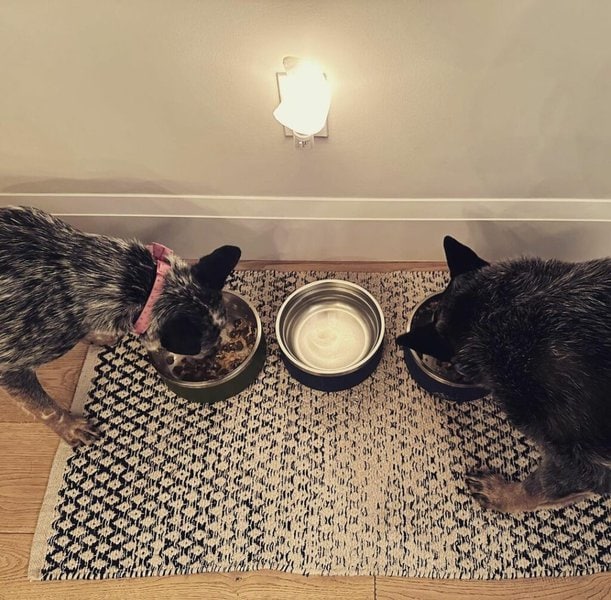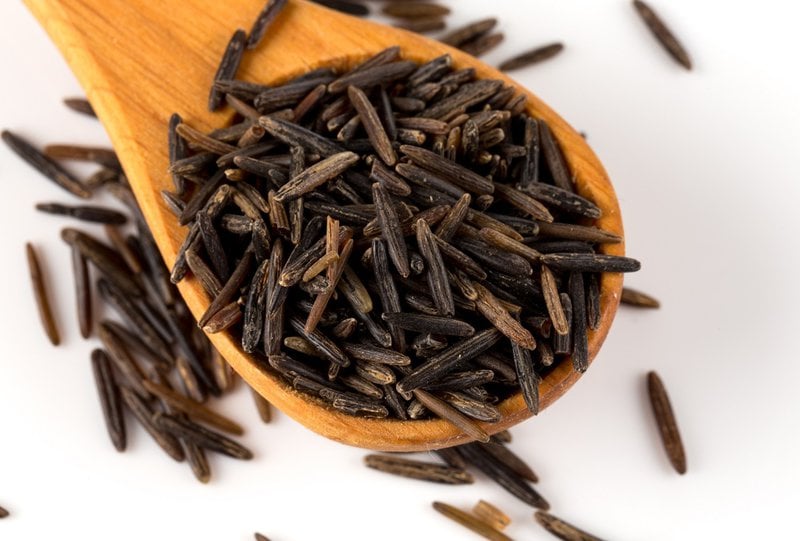As a dog owner, you probably want to make sure that your furry friend is getting all the nutrition they need to stay healthy and happy. You’re probably wondering if it’s safe to give your pup some wild rice. And you’re also probably curious as to whether or not they’ll like it. So, can dogs eat wild rice?
Yes, dogs can certainly eat wild rice, but it’s not a grain type that is commonly found in their diet, unlike ours. Wild rice can be a healthy addition to a dog’s diet, but it is best to feed it in moderation to avoid health complications, like the formation of stones due to its high phosphorus content.
In this article, we’ll take a look at the nutritional value of wild rice and whether or not dogs can eat it. We’ll also provide some tips on how to get your dog to eat wild rice (if they happen to be picky).
What Health Benefits Does Wild Rice Provide For Dogs?

Wild rice is a highly nutritious grain that can provide a variety of health benefits for dogs. It is a good source of protein, vitamins, and minerals and is also low in fat.
Some specific benefits include the following;
- Protein: Wild rice is a good source of protein, which is essential for maintaining strong muscles and healthy organs in dogs.
- Fiber: Wild rice is a good source of dietary fiber, which can help with digestion and keep your dog feeling full and satisfied. It also helps in proper stool formation.
- Antioxidants: Wild rice is a rich source of antioxidants, which can help to protect your dog’s cells from damage caused by free radicals.
- Heart health: Wild rice contains high levels of magnesium, which is known to help maintain a healthy heart and blood pressure.
- Gluten-free: Wild rice is gluten-free, which makes it a good option for dogs with gluten sensitivities.
- Minerals: Wild rice also contains amino acids and is also a good source of phosphorus and zinc.
It’s important to note that wild rice should be given in moderation as a supplement to a balanced diet, and it should always be cooked before it is given to a dog.
What Is Wild Rice?
Wild rice is a type of grain that grows in freshwater wetlands and is commonly found in North America and Canada. It is a popular food for humans, as it is high in protein, fiber, and minerals.
It is not related to the domesticated rice that is commonly consumed around the world, but rather is a type of grass that grows in shallow water in certain lakes and rivers. Wild rice is typically hand-harvested and is considered a specialty crop.
It has a nutty flavor and chewy texture and is often used in a variety of dishes, such as salads, soups, and pilafs. The grain is often sold in various forms, such as parboiled, dried, and packaged for sale.
Wild rice is also gluten-free and a good alternative for people with gluten sensitivities. It is also used as a food source for animals, like dogs, as well as in organic farming since it is a good nitrogen fixer and can help to improve soil health.
What Is The Difference Between Wild Rice, Brown Rice, And White Rice?
There is a big difference between white, brown, and wild rice. White rice is the most processed variety of the three, while brown rice is less processed and retains the hull of the grain. Wild rice isn’t actually a type of rice but a grass type that’s been harvested for its grain.
Wild rice is also the most expensive among the three types, with an average price of $0.30 per ounce.
All three varieties are gluten-free, but wild rice has the most protein and fiber. Brown rice is a good source of magnesium, phosphorus, and thiamin, while white rice has more B vitamins and iron. So, which one should you feed your dog?
Well, it depends on what your dog likes. If they’re used to eating white rice, start by mixing in some cooked wild rice until they get used to the taste. You can also cook up a batch of brown rice and mix that in as well. As always, consult with your veterinarian if you have any questions about your dog’s diet.
Can Dogs Eat Wild Rice Every Day?

No. While dogs can eat wild rice, you should only give them a small amount once in a while as a treat and not every day.
Wild rice has provided some great health benefits, like fiber and calcium, but it is also high in phosphorus, which is something that can accumulate in dogs’ livers if they eat too much of it and cause the formation of stones.
In addition, wild rice has quite a strong flavor and extra carbohydrates, which can make it less appealing for picky eaters. That being said, there’s nothing wrong with occasionally adding some wild rice to your pup’s diet if you think they might like the taste. Just remember to keep the portions small!
What Happens When A Dog Eats Wild Rice Every Day?
As with humans, a healthy diet is key for dogs. If you are going to feed your pup wild rice on a daily basis, make sure it is properly balanced with other healthful dog-friendly foods and treats. Too much or too little of any one food item can lead to health issues. Here are some health risks associated with feeding your dog too much wild rice.
Nutrient Deficiencies
Wild rice is low in certain minerals, vitamins, and amino acids that dogs need, such as calcium, phosphorus, and taurine.
Hence, a diet consisting of mostly wild rice may not provide all of the essential nutrients that a dog needs to stay healthy.
Obesity
Another risk associated with feeding wild rice every day is the potential for weight gain and obesity. Wild rice is relatively high in carbohydrates and calories, which can contribute to weight gain if fed in excess.
Gastrointestinal Problems
It’s also important to note that wild rice should always be cooked before it’s fed to a dog, as uncooked wild rice can cause gastrointestinal problems, such as bloating, diarrhea, and vomiting.
It’s also important to understand that wild rice can be difficult for some dogs to digest, so if your pup is prone to having stomach issues, it’s best to avoid wild rice altogether. If you doubt whether a certain food is ok for your pet, you should consult your vet for advice and guidance.
How Much Wild Rice Can A Dog Eat A Day?
To be safe, it’s best to feed your dog only small amounts. The amount needs to be no more than a tablespoon for every 10 lbs of body weight per day.
Keep in mind that this is an increase from the average daily diet your pup gets, so if you think they would enjoy it, only give them a bit at a time to see how they react. And if you’re not sure, talk to your veterinarian! They’ll be able to provide advice about introducing new foods into your pup’s diet.
What Is The Best Way To Prepare Wild Rice For Dogs?

Now you know that wild rice is safe for your pup to eat, but if you’re still not sure about how to prepare it for them, don’t worry. Preparing wild rice for your dog is easy and can be done in a few simple steps.
Start by boiling the wild rice in water, at a ratio of two parts water to one part rice. Boil it until the grains become tender and fluffy, which should take about 18 to 20 minutes.
Once cooked, drain off the excess water and let it cool completely before giving it to your pup.
You can also add a little bit of broth or gravy for flavor. Just make sure it is salt-free! If you’re feeling especially adventurous, you can also add some cooked veggies or lean protein sources like boiled chicken or turkey to make a full meal. Whatever you decide to do, just make sure you don’t give your pup too much wild rice all at once—start with a small portion.
Always buy wild rice that is not precooked and doesn’t have added flavors or seasonings (salt, garlic powder, etc.). And lastly, when feeding wild rice, ensure there are no broken grains that could get stuck in your pup’s throat or stomach.
Can Diabetic Dogs Eat Wild Rice?
Yes, but with some caution. Wild rice contains complex carbohydrates, which can be beneficial for a diabetic dog since they help to regulate blood sugar levels. However, it should be served in moderation and as an occasional treat only.
Before giving wild rice to your diabetic dog, speak to your veterinarian first. They might suggest that you mix it with other low glycemic index foods or monitor your dog’s glucose levels after he eats the wild rice.
If you do decide to give your canine companion some wild rice, make sure the ingredients are organic and natural without any additives or preservatives that could be harmful. It’s also best to cook the wild rice before giving it to your pup.
Is Wild Rice Better Than White Rice?
Well, that depends on who you ask. Wild rice is higher in fiber, protein, and minerals than white rice and contains some antioxidants. But white rice is easier and faster to cook and may be easier to digest.
It’s important to remember, though, that neither wild nor white rice is a complete source of nutrition for your pup. The best source of nutrition for them is high-quality dog food designed for their breed, size, and age.
That said, adding some wild rice to meals may be beneficial as it can provide some extra vitamins, minerals, and antioxidants that may help support overall health. So feel free to try adding a bit of wild rice as an occasional treat, but don’t forget that moderation is key when it comes to your pup’s diet!
Precautionary Measures To Consider When Feeding Wild Rice To Dogs

First, make sure to buy organic, non-GMO wild rice. This is because many large-scale commercial farms use herbicides and fertilizers, which could be potentially harmful to your dog.
- Ensure it is cooked properly. Raw wild rice can be difficult for dogs to digest and can cause stomach upsets. Cooking wild rice will make it easier for your dog to digest, and it will also release more of the nutrients from the grain.
- Avoid adding any seasonings or oils to the wild rice when cooking it for your dog. Many seasonings and oils can be harmful to dogs and should be avoided. Stick to plain, cooked wild rice for your dog.
- Feed in moderation as a treat or supplement to a dog’s diet. Like any new food, it should be introduced slowly and in small amounts to avoid stomach upset. A good rule of thumb is to start with a tablespoon or two of cooked wild rice mixed with their regular food. If they tolerate it well, you can gradually increase the amount over time.
- Consult with your veterinarian before feeding wild rice to your furry friend. They will know your dog’s size and health condition, and they can provide more tailored advice on how much and how often you should feed wild rice.
What Are The Alternatives To Wild Rice?
There are a variety of alternative grains that can be fed to dogs as a supplement to a well-rounded diet. Some alternatives to wild rice can include:
- Brown rice is a more commonly consumed type of rice that is also a good source of carbohydrates, vitamins, and minerals.
- Oatmeal is a good source of dietary fiber and can be a good alternative for dogs with gluten sensitivities.
- Barley is a good source of carbohydrates, dietary fiber, and essential minerals such as selenium, phosphorus, and magnesium.
- Quinoa is a grain that is high in protein, vitamins, and minerals and can be a good alternative for dogs with gluten sensitivities.
- Buckwheat is a good source of carbohydrates, minerals, and amino acids and is also gluten-free.





